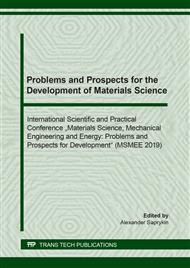p.93
p.99
p.106
p.114
p.119
p.124
p.131
p.137
p.144
Study of the Welding Zone in Double-Layer Pipe Billets Produced by Explosion Welding
Abstract:
The formation of a welding zone in long pipe billets produced by explosion welding is studied in the paper. The distribution of a melt zone over the diameter of pipe billet is investigated. Melt zones mainly are formed on the ends of the sample. Their thickness increases with increasing the welding conditions. In this work, a solid interlayer of mixed composition is shown to be formed during the explosion welding of steel pipe billets (08Kh18N10T and 37G2F) with a length of 1 meter. Comparison of the data obtained for the welding zones between pipe and sheet billets showed that solid interlayers of melts were formed in pipe billets with a smaller length as compared with sheet billets. A technique for estimating the effect of shock-compressed gas on the surface of the sheets subjected to welding with the adaptation of calculations for the welding of cylindrical products was used for a theoretical estimate of the maximum thickness of melt zones in the welding zone under certain explosion welding conditions along the length of billets. The calculations showed that the geometrical dimensions and thermodynamic parameters of shock-compressed gas will increase linearly depending on the path traveled by the contact point.
Info:
Periodical:
Pages:
119-123
Citation:
Online since:
April 2020
Authors:
Price:
Сopyright:
© 2020 Trans Tech Publications Ltd. All Rights Reserved
Share:
Citation:


